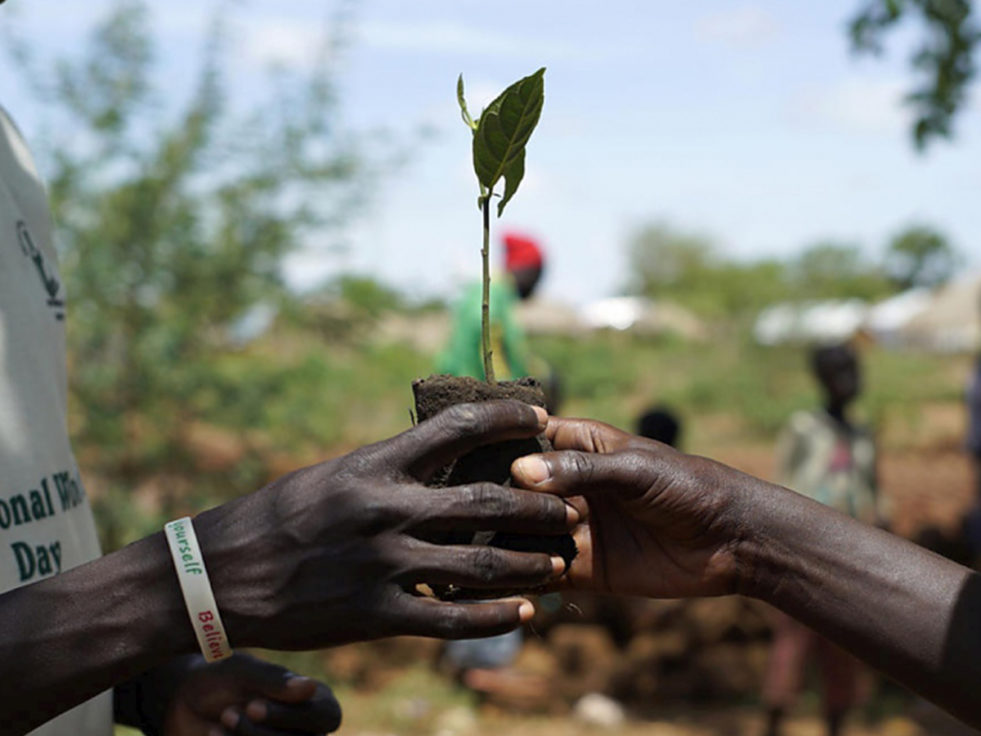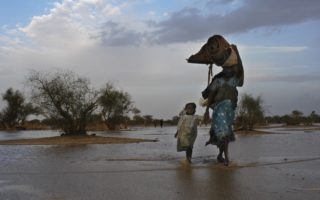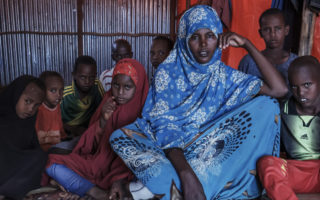
Abraham Bidal holds a young sapling that he will plant beside his home in West Nile State. © UNHCR/Michele Sibiloni
South Sudanese refugee uses his time in Uganda to promote a movement to conserve the environment.
At 32, Bidal Abraham has already had to flee his home in South Sudan three times. Each time he made it safely to neighbouring Uganda. Each time, he noticed fewer trees along the route.
“The first time I came, there were many trees. The second time, somehow, they were less. The third time now, trees are scarce,” he said.
Bidal could not stop the war he left behind, but he could plant trees and care for the land which welcomed him and his fellow refugees.
“Planting trees is important because trees are life,” he explains. “They can provide shade for us and our animals, they provide more oxygen to the air we breath. We cut trees for charcoal and is important to plant constantly so if one day we will go back to South Sudan we can leave this place as we found it.”
“Trees are life.”
As trees grow, they curb climate change by absorbing carbon dioxide from the air, storing carbon in the trees and soil, and releasing oxygen into the atmosphere. One tree can absorb as much as 48 pounds of carbon dioxide per year and can sequester one ton of carbon dioxide by the time it reaches 40 years old.
“We need to plant trees to replace the ones that we cut for firewood and for constructing our shelters,” said Bidal. “I always talk to people (about planting trees). If you talk to 100 people in a day, the ones who take the message positively are about 10 to 20. But we don’t give up, we continue.”
Bidal’s most recent escape was in May 2018, when fighting broke out in his home town of Yei. He crossed the border with his pregnant wife and daughter and was settled on a small plot of land in Omugo Extension, an area of 5.4 square kilometres hosting close to 30,000 refugees in Uganda’s northern West Nile region. Once covered in trees and bush, the settlement is now largely for residential and agricultural use.
Uganda currently hosts 1.2 million refugees. They have access to land so they can build a house and grow their own food. Both refugees and the local Ugandan community use firewood for everyday needs like cooking, and hundreds of thousands of new refugees need wood to build shelters. The activities have taken a toll on the environment and tension over natural resources was building.

Abraham Bidal, here with his wife Betty and two-month-old child, has been a refugee three times, fleeing to Uganda every time. He noticed less trees on each journey. © UNHCR/Michele Sibiloni
“There are some people in the community who just go to the bush and cut trees,” Bidal says. “The host community feel concerned about it and sometimes we clash.”
UNHCR, the UN Refugee Agency, and partners encourage refugees to plant tree seedlings around the perimeter of their plots. Some will be cut down, but others will survive as alternative forms of energy become more available for refugees and host communities.
“Without trees there will be no peace,” explains Asiku Dalili, a project officer for Rural Initiative for Community Empowerment (RICE), which works with UNHCR to implement reforestation activities and reduce tensions arising from competition for resources.
“Even before the refugees, there were still environmental challenges here and the host community were facing many problems,” said Asiku, adding that there were issues of bush burning, deforestation and charcoal vending and the presence of refugees has only added to this.
“Because they need to survive, you cannot chase them, they need to use the firewood, they need to use the soil, they need to use the water resources.”
UNHCR also supports tree nurseries within settlements, the distribution of seedlings to refugees and host communities and education about the benefits of reforestation.
In addition, the refugee agency is working with the Government of Uganda to produce 8.4 million tree seedlings this year and restore hundreds of hectares of trees within reserves and plantations.
More than 1.1 million trees have been planted in four settlements in the West Nile region since 2017, though only 55 percent survived the harsh weather and varying soil conditions.
Each morning, Bidal waters the small saplings he has planted around his house and takes pride in watching them grow. His passion matters.
“I can remember the second time I was in Uganda; I found the trees that I planted myself. Someone else is now staying there, that is his home,” he adds with satisfaction.
- See also: Eight refugees fighting for the planet
Originally published on UNHCR on 05 June 2019





